
Lithuanian National Drama Theatre, located on Gediminas Avenue in Vilnius, is one of Lithuania's most prominent publicly funded performing arts venues and cultural institutions. Founded as a Vilnius State Theatre in 1940, it became Lithuanian National Drama Theatre in 1998. The theatre's façade featuring the Feast of Muses sculpture by Stanislovas Kuzma has become a landmark of Vilnius city.
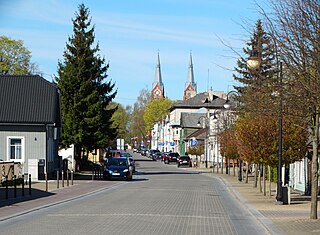
Jurbarkas is a city in Tauragė County, in Samogitia, Lithuania. Jurbarkas is located in the historic land of Karšuva. It is on the right-hand shore of the Nemunas at its confluence with the tributaries Mituva and Imsrė. The town became an important road junction after a bridge was built over the Nemunas in 1978.
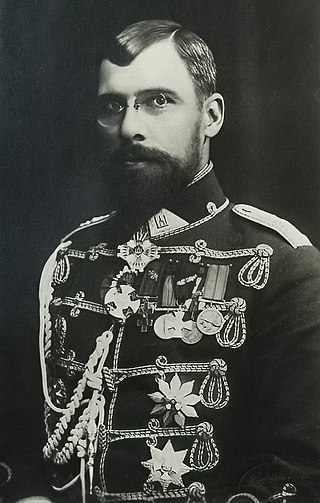
Povilas Plechavičius was a Lithuanian military officer and statesman. His military career began in the Imperial Russian Army as a yunker during World War I. Then, Plechavičius climbed the ranks of the interwar period Lithuanian Army from captain to lieutenant general.
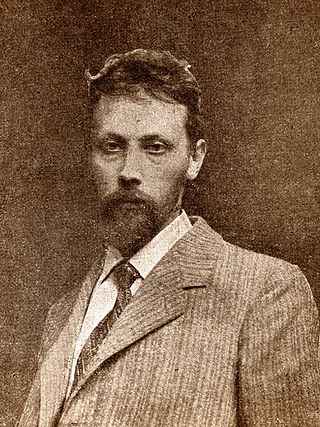
Antoni Wiwulski was a Polish-Lithuanian architect and sculptor.
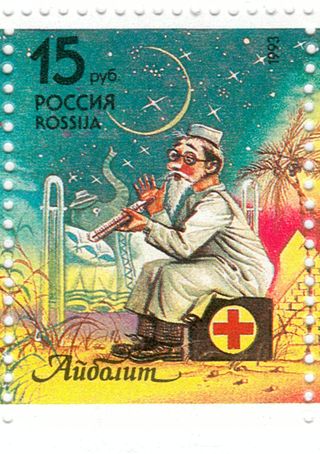
Doctor Aybolit is a fictional character from the children's poems Aybolit (1929) and Barmaley (1925) by Korney Chukovsky, as well as from the children's fantastic novella Doctor Aybolit (1925) by the same author. The name may be translated as "Ai" ("Ouch"), "Bolit" ".

The Cathedral Basilica of St Stanislaus and St Ladislaus of Vilnius is the main Catholic cathedral in Lithuania. It is situated in Vilnius Old Town, just off Cathedral Square. Dedicated to the Christian saints Stanislaus and Ladislaus, the church is the heart of Catholic spiritual life in Lithuania.
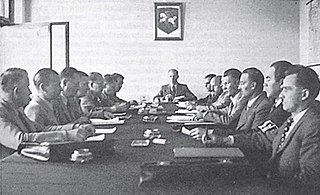
The Provisional Government of Lithuania was an attempted provisional government to form an independent Lithuanian state in the last days of the first Soviet occupation and the first weeks of the German occupation of Lithuania during World War II in 1941.

Three Crosses is a prominent monument in Vilnius, Lithuania, on the Hill of Three Crosses, originally known as the Bald Hill, in Kalnai Park. According to a legend, which finds its source in some historic events, seven Franciscan friars were beheaded on top of this hill. Wooden crosses have been sited in the location since the early 17th century, and they became a symbol of the city and an integral part of the city's skyline.

Antakalnis Cemetery, sometimes referred as Antakalnis Military Cemetery, is an active cemetery in the Antakalnis district of Vilnius, Lithuania. It was established in 1809.
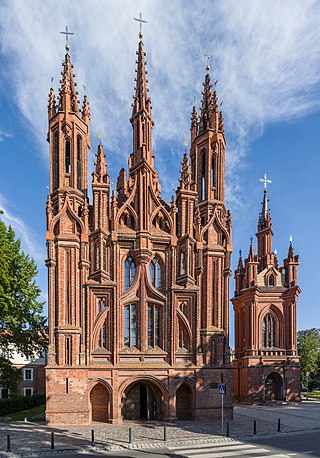
St. Anne's Church is a Roman Catholic church in Vilnius' Old Town, on the right bank of the Vilnia river established circa 1495–1500. It is a prominent example of both Flamboyant and Brick Gothic styles. St. Anne's is a prominent landmark in the Vilnius Old Town that enabled the district to be named as a UNESCO World Heritage Site, and is one of the most interesting examples of Gothic architecture in Lithuania.

Tuskulėnai Manor is a neoclassical manor in Žirmūnai elderate of Vilnius, Lithuania. It is best known as burial grounds of people executed by the KGB in 1944–1947. After Lithuania regained independence in 1990, the manor was reconstructed and the park was transformed into a memorial to the victims of Soviet repressions. It is administered by the Lithuanian Genocide and Resistance Research Center.
Vytautas Kernagis was a Lithuanian singer-songwriter ("bard") actor, director, and television announcer. He is considered to be a pioneer of Lithuanian sung poetry.
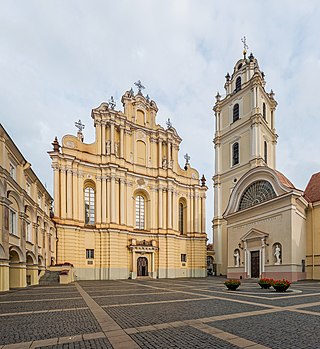
The Church of St. Johns, St. John the Baptist and St. John the Apostle and Evangelist is located at the Old Town of Vilnius, Lithuania and dominates the university ensemble. Since the times of the Jesuit Academy professors and students used to pray here, and Vilnius theologians gave sermons. It was a place for performances and disputes, where theses were defended and kings greeted.
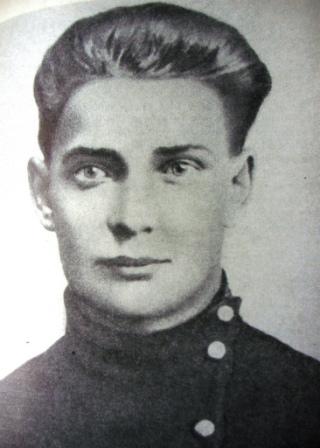
Julius Janonis was a Lithuanian poet and writer. Born to a family of poor peasants, he began writing and translating poems at the age of 14. Learning from Maironis, he wrote about nature and suffering of the poor. His first poems were published in 1912. While still a student, he began contributing articles to Lithuanian press and joined activities of leftist aušrininkai.

Užutrakis Manor is a late 19th-century residential manor of the Tyszkiewicz family in Užutrakis, on the shore of Lake Galvė, opposite the famous Trakai Castle.

The Church of St. Catherine is a Roman Catholic church in Vilnius' Old Town. It was founded by the Hetman of the Grand Duchy of Lithuania and Voivode of Vilnius Jan Karol Chodkiewicz in 1618.
Ramybė Park is a public park in Kaunas, Lithuania, established in 1959 in the territory of the Kaunas City Old Cemetery that was also known as the Carmelite Cemetery. The cemetery was established in 1847 and became the main city cemetery with sections for four different religions – Roman Catholics, Eastern Orthodoxs, Lutherans, and Muslims. During World War I and subsequent Lithuanian Wars of Independence, Russian, German, and Lithuanian soldiers were buried in the cemetery. During the interwar period when Kaunas was the temporary capital of Lithuania, many famous people were buried there and several buildings were constructed on the cemetery's territory. In 1930, a monument to fallen Lithuanian soldiers with a tomb of an unknown soldier was unveiled. Around the same time, a tradition to honor fallen soldiers on the All Saints' Day began.

Stanislovas Kuzma was a Lithuanian sculptor. His works include decorative sculptures, monuments, small sculptures, sculptural portraits, tombstones, memorials, and medals. Among them are works on sacred subjects. He worked with stone, wood, and metal, often combining materials.
Juozas Kavoliūnas was a Lithuanian farmer. As a representative of Lithuanian farmers and the Lithuanian Christian Democratic Party, he was elected to the Council of Lithuania in January 1919. During the 1935 Suvalkija farmers' strike, he distributed anti-government proclamations for which he was imprisoned for six years. He was freed after the Soviet occupation of Lithuania in June 1940 only to be arrested and deported during the June deportation in 1941. His wife and three children died in Soviet detention, while he was able to return to Lithuania in 1958.


















